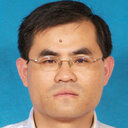Intracranial hydatid cyst in children: report of 30 cases.
Ключевые слова
абстрактный
OBJECTIVE
To analyze the clinical manifestations, radiological features, and surgical outcomes in 30 pediatric intracranial hydatid cysts.
METHODS
We reviewed the clinical, radiological, and surgical aspects of pediatric intracranial hydatid cysts patients who received surgical treatment at the Neurosurgical department of Xinjiang Medical University between the years 1985 to 2007, retrospectively.
RESULTS
Headache and vomiting were the most common initial symptoms in our series. Neurological deficits from the mass effect of the cysts were seen in 15 cases, including hemiparesis, visual deficit, and diplopia. Epilepsy occurred only in one patient with temporal lobe hydatid cyst. On computed tomography (CT), it presented as a round-shaped and thin-walled homogeneous low-density cystic lesion without surrounding edema and enhancement. Only five patients had a magnetic resonance imaging (MRI) scan, and presented low signal intensity on T1-weighted image and high signal intensity on T2-weighted image. Surgical removal of cyst was performed in all cases and intact removal was done in 29 cases. However, one cyst ruptured during the dissection of cyst wall, thus, resulting in one death. There were no additional neurological deficits which were caused directly by surgery.
CONCLUSIONS
Increased intracranial pressure is common in patients with cerebral hydatid disease. CT and MRI are the first-line diagnostic procedures. Surgery is the treatment of choice for the majority of intracranial hydatid cysts. Multiple and deep seated lesions should receive medical treatment postoperatively.



